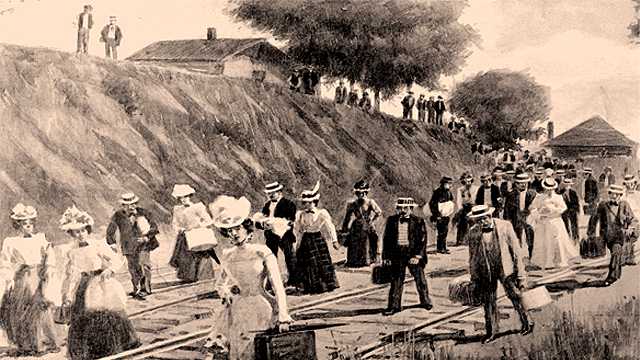Yellow Fever: Causes, Symptoms, Vaccine, and History

Originating on the west coast of Africa, in the 18th and 19th centuries, maritime trade delivered not only the moral predicament of slavery into North America, but also the principal vector of Yellow Fever transmission, the Aedes aegypti (a-dees agyptie) mosquito.
Yellow Fever Symptoms
Most cases of yellow fever are mild and similar to influenza, consisting of fever, headache, nausea, muscle pain and backache. After 3 to 4 days most patients improve, however about 15% of its victims suffer recurrent fever and severe illness, including the onset of hepatitis and hemorrhagic fever.
Half of those who develop severe illness die within 10 to 14 days. Between 1800 and 1850, Yellow Fever became a regular visitor in the port cities of the southern United States. 15 epidemics in Savannah, 21 in Charleston, 33 in New Orleans.
The yellow fever issue came to a head after heavy losses to the disease during the Spanish-American War of 1898. Combat-related losses during the five-month conflict claimed 9,300 lives, while losses to yellow fever exceeded 53,000. As a result, George Sternberg, known as the father of American bacteriology, formed the Army Yellow Fever Commission in 1900, with the hope of ending the scientific debate on the cause and spread of the disease.
What Causes Yellow Fever?
Among the researchers was James Carroll, who produced yellow fever in a volunteer whom he had injected with infected blood that he had first passed through a Berkefeld filter.
The mystery as to why no one had been able to identify the bug responsible for yellow fever was because the bug was filterable or ultra-microscopic. The bug, Carroll discovered, was a virus.
Finding a Vaccine for Yellow Fever
Efforts at developing a vaccine against yellow fever would take many dangerous wrong turns over the coming decades, until Yale epidemiologist Max Theiler and the Rockefeller Institute created a vaccine known as 17D.
Theiler’s discovery would earn him the Nobel Prize in medicine in 1951. Subcultured from chicken embryos, Theiler’s 17D was given to virtually all US military recruits fighting in the African Theater of World War Two.
Between January of 1941 to April 1942, an astounding 7 million doses were distributed to American fighting forces. While the disease has been virtually wiped out in North America, intermittent yellow fever outbreaks continue to dog sub-Saharan Africa and Latin America.
It is estimated that 200K cases of yellow fever are diagnosed annually, with over 30K deaths per year.
